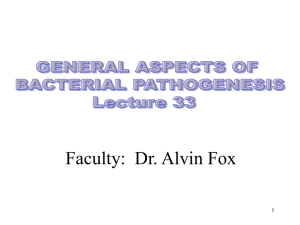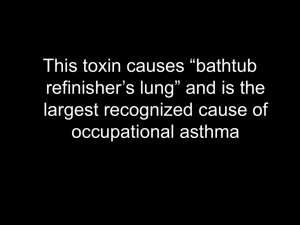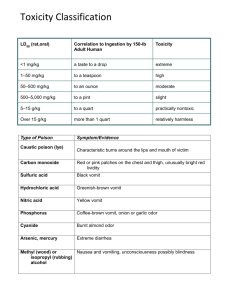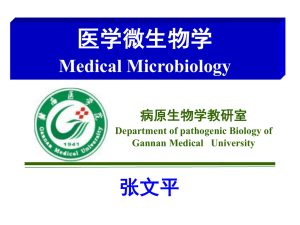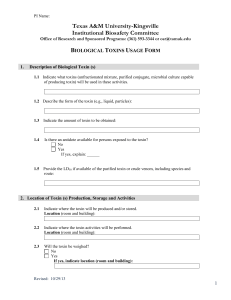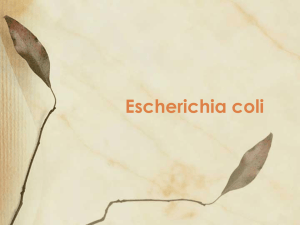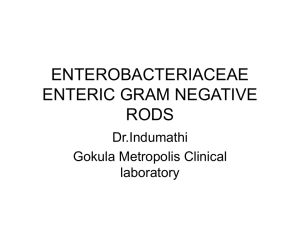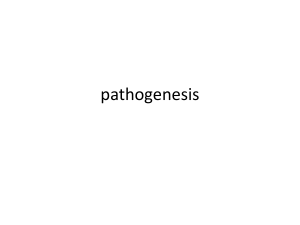Chapter 14 & 16 Homework
advertisement
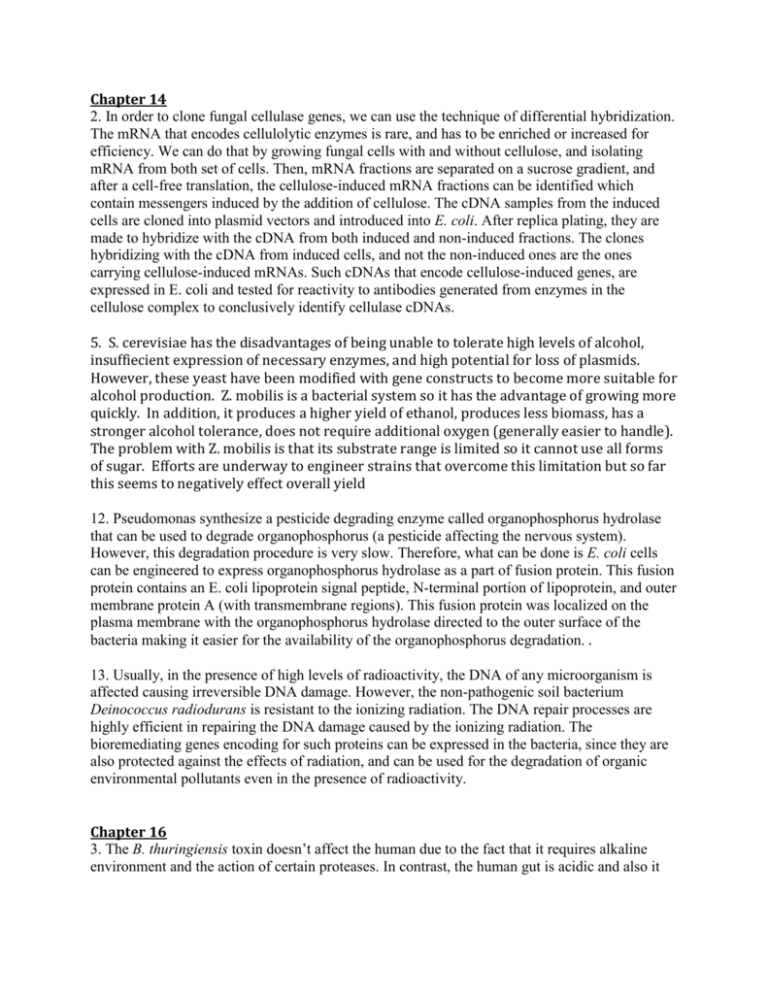
Chapter 14 2. In order to clone fungal cellulase genes, we can use the technique of differential hybridization. The mRNA that encodes cellulolytic enzymes is rare, and has to be enriched or increased for efficiency. We can do that by growing fungal cells with and without cellulose, and isolating mRNA from both set of cells. Then, mRNA fractions are separated on a sucrose gradient, and after a cell-free translation, the cellulose-induced mRNA fractions can be identified which contain messengers induced by the addition of cellulose. The cDNA samples from the induced cells are cloned into plasmid vectors and introduced into E. coli. After replica plating, they are made to hybridize with the cDNA from both induced and non-induced fractions. The clones hybridizing with the cDNA from induced cells, and not the non-induced ones are the ones carrying cellulose-induced mRNAs. Such cDNAs that encode cellulose-induced genes, are expressed in E. coli and tested for reactivity to antibodies generated from enzymes in the cellulose complex to conclusively identify cellulase cDNAs. 5. S. cerevisiae has the disadvantages of being unable to tolerate high levels of alcohol, insuffiecient expression of necessary enzymes, and high potential for loss of plasmids. However, these yeast have been modified with gene constructs to become more suitable for alcohol production. Z. mobilis is a bacterial system so it has the advantage of growing more quickly. In addition, it produces a higher yield of ethanol, produces less biomass, has a stronger alcohol tolerance, does not require additional oxygen (generally easier to handle). The problem with Z. mobilis is that its substrate range is limited so it cannot use all forms of sugar. Efforts are underway to engineer strains that overcome this limitation but so far this seems to negatively effect overall yield 12. Pseudomonas synthesize a pesticide degrading enzyme called organophosphorus hydrolase that can be used to degrade organophosphorus (a pesticide affecting the nervous system). However, this degradation procedure is very slow. Therefore, what can be done is E. coli cells can be engineered to express organophosphorus hydrolase as a part of fusion protein. This fusion protein contains an E. coli lipoprotein signal peptide, N-terminal portion of lipoprotein, and outer membrane protein A (with transmembrane regions). This fusion protein was localized on the plasma membrane with the organophosphorus hydrolase directed to the outer surface of the bacteria making it easier for the availability of the organophosphorus degradation. . 13. Usually, in the presence of high levels of radioactivity, the DNA of any microorganism is affected causing irreversible DNA damage. However, the non-pathogenic soil bacterium Deinococcus radiodurans is resistant to the ionizing radiation. The DNA repair processes are highly efficient in repairing the DNA damage caused by the ionizing radiation. The bioremediating genes encoding for such proteins can be expressed in the bacteria, since they are also protected against the effects of radiation, and can be used for the degradation of organic environmental pollutants even in the presence of radioactivity. Chapter 16 3. The B. thuringiensis toxin doesn’t affect the human due to the fact that it requires alkaline environment and the action of certain proteases. In contrast, the human gut is acidic and also it lacks the presence of the required proteases which prevents the action of the toxin, and makes it harmless to humans. 4. The Bt subspecies israelensis is effective because it carries a low risk for the development of resistance. To isolate the protoxin gene from the bacterium one could use the proteins that the translated Bt protein will bind in the guts of insects to bind the Bt protein. The protein probe could be tagged so that the complex could be isolated and the sequence for the protoxin could be determined using amino acid mass spectroscopy. This gene would be useful because it carries less risk of insects developing resistance so it will be better for the long term. It can be inserted into other bacteria such as E. coli. 9. To lessen the risk of resistance I would use the israelensis strain of Bt because this subspecies has a low level of resistance because they not only synthesize three different Cry proteins but also produce a toxic protein that is not homologous to the Cry proteins which decreases the chances that insects will spontaneously develop resistance to toxins so different in structure. In addition one should consider rotating different strains of the toxin annually, alternating use of Bt toxin with the use of other environmental toxins, or mixtures of Bt strains to decrease risk of resistance development. 15. To improve the insecticidal properties of baculoviruses I would suggest engineering a baculovirus that synthesizes juvenile hormone esterase, which will prematurely cause the larvae to stop feeding. This will slow destruction by the larvae. In addition, one could insert a toxin gene such as the Bt toxin gene into the viral genome so that infection also carries the toxin and the virus can more easily kill the insects. Many other genetic engineering techniques can be used to enhance the insecticidal properties of baculoviruses.

